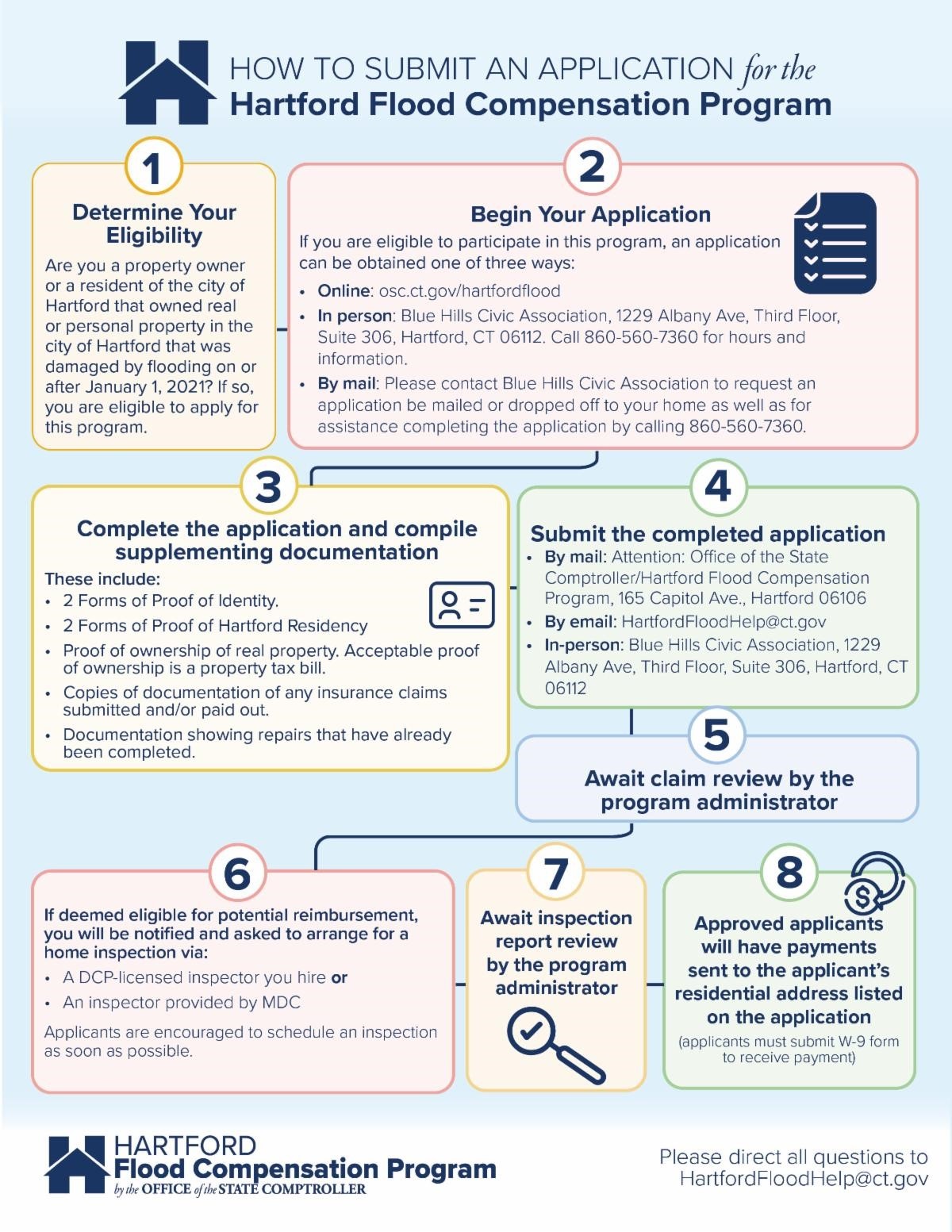On August 10, 2023, Comptroller Sean Scanlon announced that the application for this program will go live on September 1, 2023.
Established through the adoption of the Governor’s 2024-2025 biennium budget, this $5,000,000 pilot program will be overseen by the Office of the State Comptroller (OSC), administered by Dr. Gary Rhule, and charged with providing financial assistance or reimbursement to eligible owners of real property in the city of Hartford who experienced damage caused by flooding on or after January 1, 2021.
Beginning September 1, in order to obtain reimbursement, property owners who believe they are eligible must:
- Visit osc.ct.gov/HartfordFlood or Blue Hills Civic Association (Temporary address at the Colin Bennett Building: 1229 Albany Avenue, Third Floor, Suite 306, Hartford, CT) to obtain an application.
- Submit a completed application and supporting documentation to HartfordFloodHelp@ct.gov, Blue Hills Civic Association, or OSC (Attention: Office of the State Comptroller/Hartford Flood Compensation Program, 165 Capitol Ave., Hartford 06106).
- Await claim review by the program administrator.
- If notified by the grant administrator they are eligible for potential reimbursement, arrange a home inspection via an approved DCP-licensed inspector or an MDC-provided inspector.
- Await inspection report review by the program administrator.
- Approved applicants will have payments sent to the applicant’s residential address listed on the application.
Applications will be accepted beginning September 1, 2023. There is no deadline for submission, but it is a first come, first served program until funds are depleted. Applicants wishing to appeal any decision will have 30 days to do so via a third-party appeals administrator.
Questions can be directed to HartfordFloodHelp@ct.gov.
Steps are further outlined in the graphic below.
